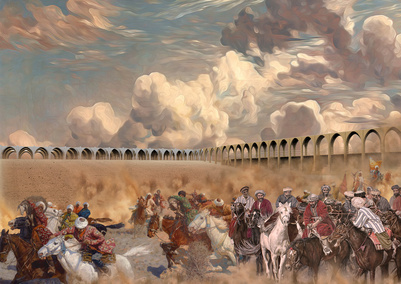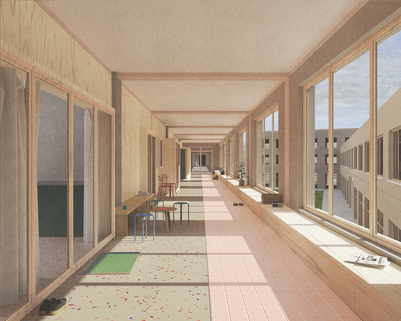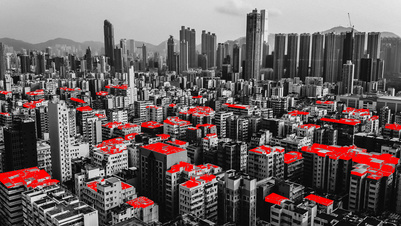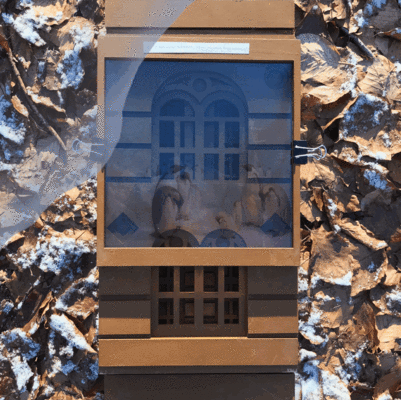This project suggests Precarious Planning as an alternative to the reality of contemporary urban planning and the problematics which comes with it. Precarious Planning is a system based on interdependencies: placing its actors – human and non-human - into deeper dependence on each other.
“ ‘Sustainability’ is the dream of passing a livable earth to future generations, human and nonhuman. The term is also used to cover up destructive practices, and this use has become so prevalent that the word most often makes me laugh and cry. Still, there is reason to dream-and to object-and to fight for alternatives. Rather than criticize the word, then, I’ll take it seriously, repurposed as a radical argument in the face of hegemonic practice. Meaningful sustainability requires multispecies resurgence, that is, the remaking of livable landscapes through the actions of many organisms.”
- Anna Tsing, A Threat to Holocene Resurgence Is a Threat to Livability, p 51.


The proposal is grounded in a somewhat tangible, yet so far non-existent Lynetteholm development project. By & Havn’s Lynetteholm offers itself as one of - way too many – scalable urban projects, which can be seen all over the world. As proposed by By & Havn, the project, on one hand, follows the logic of economic growth which comes together with the narratives of “better future” achieved through progress. Yet on the other hand it also presents itself as a sustainable development that protects the city of Copenhagen and its inhabitants from the upcoming storm surges, allowing them to remain numb to the effects of climate change. However, as we all may have probably sensed now, progress does not necessarily equal bright future.
This thesis combines something as purely “progress minded” as Lynetteholm development with non-human rhythms and growth logics of mycelium and eelgrass. It suggests a paradigm shift. A move from the master planning mentality towards the precarious planning mentality. It is time for humans to accept precarity: acknowledging our vulnerability to others – and to the environment around us.


The islands of the Precarious Lynetteholm are constructed by various natural forces working together. The project follows a growth logic, yet a different one than By & Havn’s Lynetteholm. There is a limit to scaling and growing of the system: the limit of situated natural forces.
In areas of shallow water, waves are prominent in transporting sediment. The proposed sediment traps – permeable membranes – take energy from the waves, while allowing them to pass through. Sand collects around these traps, which eventually become completely covered in sand. The trap membranes degrade, only the timber poles reach above the water level, serving as a support for structures on the islands.
The islands form a series of lagoons, which provide ideal conditions for eelgrass growth. At the same time eelgrass roots bind sediment, preventing erosion of the islands. Eelgrass meadows support large part of the coastal biodiversity and absorb and store great amounts of carbon dioxide. Eelgrass is also a cascade facilitator. Cascade facilitators are habitat-forming species which facilitate another habitat-forming species with synergistic effects on biodiversity. Simply said, eelgrass presence can give rise to an entire community of other species. Certain humans – growth planners - are tragic cascade facilitators. Human presence usually destroys communities of other species rather than supports them. Ultimately, this thesis aims to re-teach humans to be better at creating ecosystems and become successful cascade facilitators.




Eelgrass leaves whiter during autumn. The lagoons form a pattern following the predominant sea current flow on the site. The islands shield the waves yet allow the northbound sea current to flow through and carry dead eelgrass. A series of eelgrass traps is proposed on each inlet of the lagoon, collecting floating eelgrass which is being transported by the sea currents.
Eelgrass is used as the primary resource of the islands. The human activities on the islands circulate around eelgrass, which is being collected, cleaned, dried, thatched in multiple ways and used as a building material. Eelgrass has e.g. high fire resistance and is naturally mould resistant. Activities on the islands depend on seasonal changes. The proposal is vulnerable – eelgrass communities need to remain healthy, the roofs might fly away during storms, the structures get flooded, the traps break, everything requires maintenance and care.
The proposal follows the seven Precarious Planning Rules, opposing the architecture of anaesthesia. The architecture of the islands is not anaesthetic, to the contrary: it increases sensitivity of humans to the environment. The methodology of the project is equally based on working with another organism – fungi and eelgrass. By working with mushrooms, we come to direct contact with them –it is a tactile engagement - the opposite of an anaesthetic non-relationship. It is only through contact we begin to care.











































